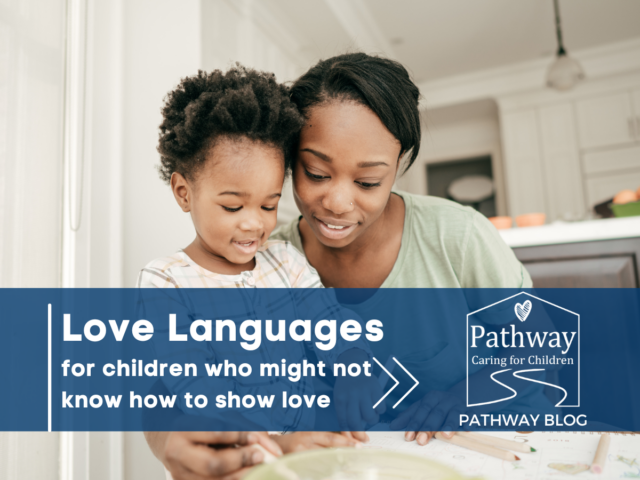
Love Languages for Children
No doubt, you’ve heard of the 5 Love Languages. They were introduced by Dr. Gary Chapman in 1992. According to his book, people express caring, love, and appreciation in 5 different ways:
→ QUALITY TIME: Focused and undivided attention, one-on-one time
→ GIFTS: Tangible symbols that show thoughtfulness and effort
→ WORDS OF AFFIRMATION: Verbal or written words used to compliment, praise, affirm or recognize
→ PHYSICAL TOUCH: Non-intimate touch or body language that reinforces a sense of presence
→ACTS OF SERVICE: Acts that ease another’s burden or brings them joy
Each of us has a preferred love language- a way we are most comfortable expressing that we care or appreciate someone. Equally important, we can more easily perceive how others care about us when they use our love language.
We may miss the message when someone expresses their caring in other ways. Despite all their effort, we may feel unappreciated or even unloved. Think about that! You could bring home gifts, make special meals, set aside time to watch someone’s favorite movie with them, and TELL them they are special…but if their love language is Physical Touch, they may still feel or even say that no one really loves them.
Have you ever considered how Love Languages could be another tool in your toolbox as you welcome and care for your foster children?
Maybe if you are having trouble connecting with a child or motivating them – you may want to ask yourself if you are speaking the child’s Love Language. Maybe if your child doesn’t care about earning stickers, they may be motivated if each sticker earned them extra minutes of one-on-one time with you.
So, how do you identify your child’s Love Language?
There are indirect ways:
- Observe how they express they care about others (“I picked this flower for you!”)
- Listen to requests they have of you (“Am I doing a good job?”)
- Notice their complaints (“You never play with me!)
- Offer choices and observe their preferences (Would you rather get a prize out of the treasure chest or go for a walk to the park with me?).
There is also a Quiz for Children that you can help your child take online. Just GOOGLE it! This could be a nice way to connect with a child when they first come to your home or fun family activity to build stronger connections within your household.
Knowing and using your child’s love language could help you connect with them more effectively and consistently. This means you can make a bigger difference in the life of a child using the same amount of energy and resources simply by interacting with them in the way they most naturally communicate.
Foster Parent Challenge: Give the Love Languages a chance! Identify your child’s love language. Create a list of things using that Love Language that would be most meaningful for your child. Intentionally, speak your child’s language.